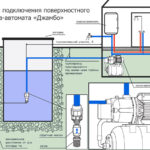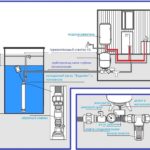For a comfortable life outside the city, it is important to bring all communications to the house. One of them is the water supply. A good solution would be to conduct water into the house from a well with your own hands. The entire scope of work can be completed in one or two days.
Plumbing a private house from a well

When deciding to supply water to the house from a mine source, the master receives a number of such advantages:
- Relatively low cost of installation work, in contrast to drilling a well and arranging a pipeline from it.
- The service life of an autonomous source is on average 20 years.
- A clear diagram of the piping to the house.
- The possibility of arranging a collector wiring for a house, a sauna, a swimming pool and irrigation, provided there is a sufficient flow rate of the source.
For the installation of a water supply system in a private house from a well, it is desirable to make sure that the autonomous source is located a little distance from the building. Then you will have to use a smaller footage of pipes and carry out less time-consuming land work.
Preparatory work
During the preparation phase, it is important to draw up a detailed pipeline diagram. In this case, it is necessary to carefully measure each section of the horizontal length of the pipes. Summing them up, the master purchases the required amount of consumables. Based on the scheme of turns, system drops, the required number of fittings, adapters, shut-off valves is purchased.
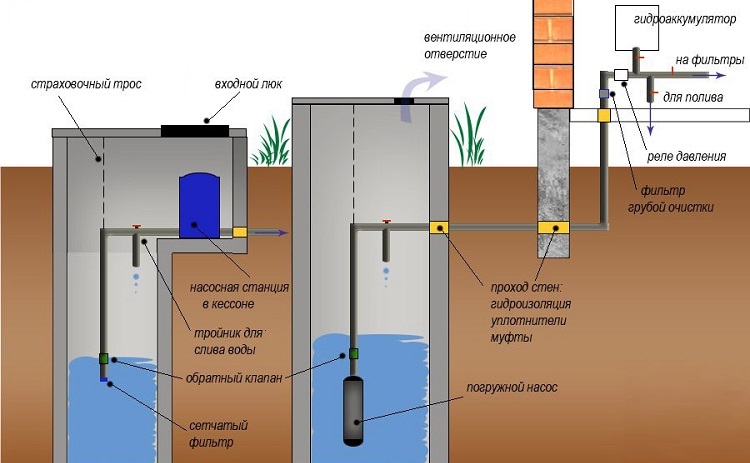
The types of pipes for external and internal routing differ in materials. It is better to buy PET tubes for the street, and polypropylene tubes for the house. The section depends on the total length of the line:
- length up to 10 m - 20 mm;
- 10-30 m - 25 mm;
- from 30 m and above - 32 mm.
It is desirable that pipes for cold water supply have a wall thickness of 2.8 mm or more.
At the preparation stage, you should purchase all the necessary material and tools. From the first you need to prepare:
- Pump equipment. The unit can be taken on a surface (for a well depth of up to 8 m) or submersible (a source depth of more than 8 m). The device should be chosen for performance and power. It is desirable that the productivity of the pump does not exceed the flow rate of the well. Otherwise, it will be emptied quickly. This threatens the failure of the unit.
- Hydroaccumulator. For a family of 2-3 people, a volume of 25-50 liters is enough.
- Pressure gauge and pressure switch. With their help, it is possible to adjust the optimal indicators of the atmospheres in the system.
- Coarse filter and check valves.
- The required footage of pipes for internal and external wiring plus fittings.
- Insulation, provided that the line will be laid above the level of soil freezing. This is possible due to the relief of the suburban area and the type of soil on it with the presence of rocks.
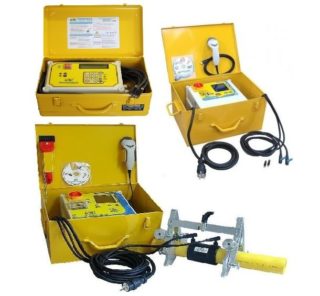
From the tools you should prepare:
- bayonet shovel;
- puncher;
- soldering iron for polypropylene and special electrofusion couplings for welding PET pipes;
- pliers;
- rammer;
- hammer, nails.
It is better to put the pipeline into the house through the foundation.
Stages of conducting water into the house
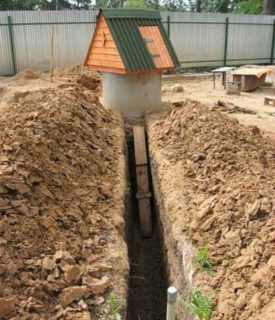
Having a detailed diagram of water supply from a well with his own hands, the master can perform all the work, even alone.
The first stage of installation is digging a trench from the walls of the source to the foundation of the house. It is desirable to deepen it by 1.5-1.8 meters (below the freezing level). Complex turns of the system are excluded.The bottom of the trench must be well compacted and a layer of sand cushion 5-7 cm should be poured. It is well tamped.
After the trench is ready, a technical hole should be formed in the well ring using a perforator in order to bring a water intake pipe there (if necessary, with a submersible pump). They act carefully, having previously substituted a container for collecting possible construction debris under the drilling site.
After the technical hole is ready, proceed to the installation of the pump. If a submersible model is used, the installation steps are as follows:
- A water intake hose is attached to the outlet pipe of the unit using fittings. A check valve is mounted about a meter from the junction.
- The vertical section of the water supply hose is connected by means of a swivel fitting to the main pipe, which is led out through a technical opening in the shaft ring. This place is then well waterproofed.
- The pump itself must be lowered into the water and fixed on the bracket. An electric cable is passed through it.
- The water supply hose is connected to a storage membrane tank, which is installed either in the caisson or in the basement of the house.
If the master mounts a surface unit, the work is done as follows:
- A special platform is allocated for the pump. The closer it is to the well, the better for the unit. The equipment can be placed in the basement of the house or in a special caisson located near the source.
- It is important to secure the feet of the pump to the floor to avoid movement when vibrated.
- When using fittings, a water intake hose is attached to the inlet of the unit. It is important to fix a coarse filter at its end. The length of the water intake hose should be equal to the distance from the water mirror in the well to the inlet pipe.
- A drainage pipe is attached to the pump outlet, which is subsequently connected to a hydraulic accumulator.
- The main highway is diverted from it. The system can be organized in two versions - sequentially or in a collector way. The latter will ensure a stable pressure in the system even with 2-3 taps turned on at the same time.
After installing the pumping equipment, it remains to lay all the pipeline lines. On the street, the tubes are placed in an insulating material: expanded polystyrene shell, heating cable, basalt wool, etc., connecting them in series.
A technical hole is made at the point of entry of the main into the house in the foundation using a perforator. It is reinforced with a steel sleeve and only after that the pipe cut is mounted. All gaps must be well insulated, closed, and sealed.
As soon as the external pipeline is laid, the installation of the inside of the water supply system in the house is carried out.
After routing the tubes, adjust the pumping equipment. The surface unit and accumulator never run dry. Therefore, they need to be filled with water through special technical holes.
When starting the pump with a hydraulic tank, the lower and upper pressure of the accumulator is adjusted so that the station works to turn the equipment on and off. The optimal indicator is the range of 1.5-3 atm.
After adjusting the pressure, it is important to check the entire system for leaks. If they are not there, the station turns on and off properly, backfilling of the trench can be carried out. It is better not to tamp the soil here, so as not to damage the pipes. It is advisable to add it periodically after subsidence.
Common mistakes
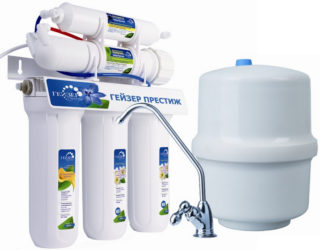
The most common mistakes made by inexperienced craftsmen lead to the need for complex repairs later.
- Incorrect deepening of the main line above the level of soil freezing in the region. This can cause the water in the system to freeze.
- Lack of insulating material when laying the pipeline above the level of soil freezing.
- Insufficient insulation of the pipe in the place where the master decided to bring the water supply into the house. Frost can form in this area due to cold bridges.
- Incorrect position of the submersible pump or water inlet hose above the static water level mark. In this case, the unit will periodically run dry.
- Incorrect selection of the pump for performance. A too powerful unit will quickly dry up the source. Weak - will not give the required amount of water to the family or will burn out over time.
- Lack of check valves after the accumulator and pump. Here, the water will periodically drain back, disrupting the operation of the equipment.
- Incorrect adjustment of the pressure indicators in the system, in which the pump will pump constantly or, on the contrary, will not turn on for a long time.
To improve the autonomous water supply from the well, it is advisable to install a good filtration system and a heating boiler.

